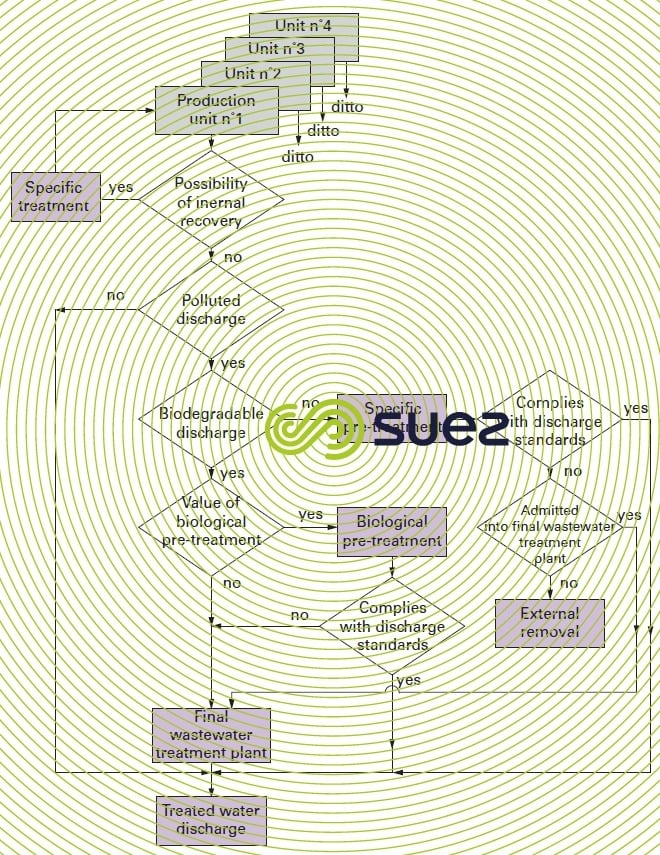general
Reading time:The chemical industry is extremely diversified and typically separated into the following major groups:
- petrochemicals;
- inorganic chemistry;
- speciality chemicals;
- fine chemicals;
- pharmaceuticals.
This wide range does not allow us to elaborate a “typical treatment scheme” with basic general recommendations, with the exception of those quoted under plant design - general – on system organisation.
Many factories manufacture a wide range of products (consisting of more or less complex molecules) which periodically can change in terms of quality and quantity, and this is likely to require routine reviews of the efficiency of the treatment process.
Consequently, more than any other industry, the chemical industry is subject to the following conditions:
- segregation of various production processes and waste streams;
- heavily or lightly contaminated storm water;
- heavily or lightly contaminated cooling water;
- sanitary wastewater;
- inorganic water that can be discharged immediately;
- process water depending on its origin;
- high-risk effluents;
based on this segregation, a wastewater treatment system must be developed with the following objectives:
- segregating what is incompatible;
- separately treating significantly non-biodegradable discharges;
- treating what may be non-biodegradable at the source prior to dilution:
- either with the objective of internal recycling;
- or eliminating pollutants that may interfere with the final treatment by subjecting them to a separate and specific treatment (incineration, adsorption);
- or to treating the most highly concentrated waste streams in order to render the final treatment more cost-effective;
- separate treatment of some concentrated and easily biodegradable waste streams biologically (methane fermentation, Méteor …) to reduce the load for the main or final biological treatment.
After completion of internal recycling or specific pre-treatment, the final treatment plant will be required to process a smaller volume and, above all, a lower pollutant load because strong wastes will already have undergone a preliminary treatment.
The diagram in figure 40 summarises the different stages in such a design.



Bookmark tool
Click on the bookmark tool, highlight the last read paragraph to continue your reading later












